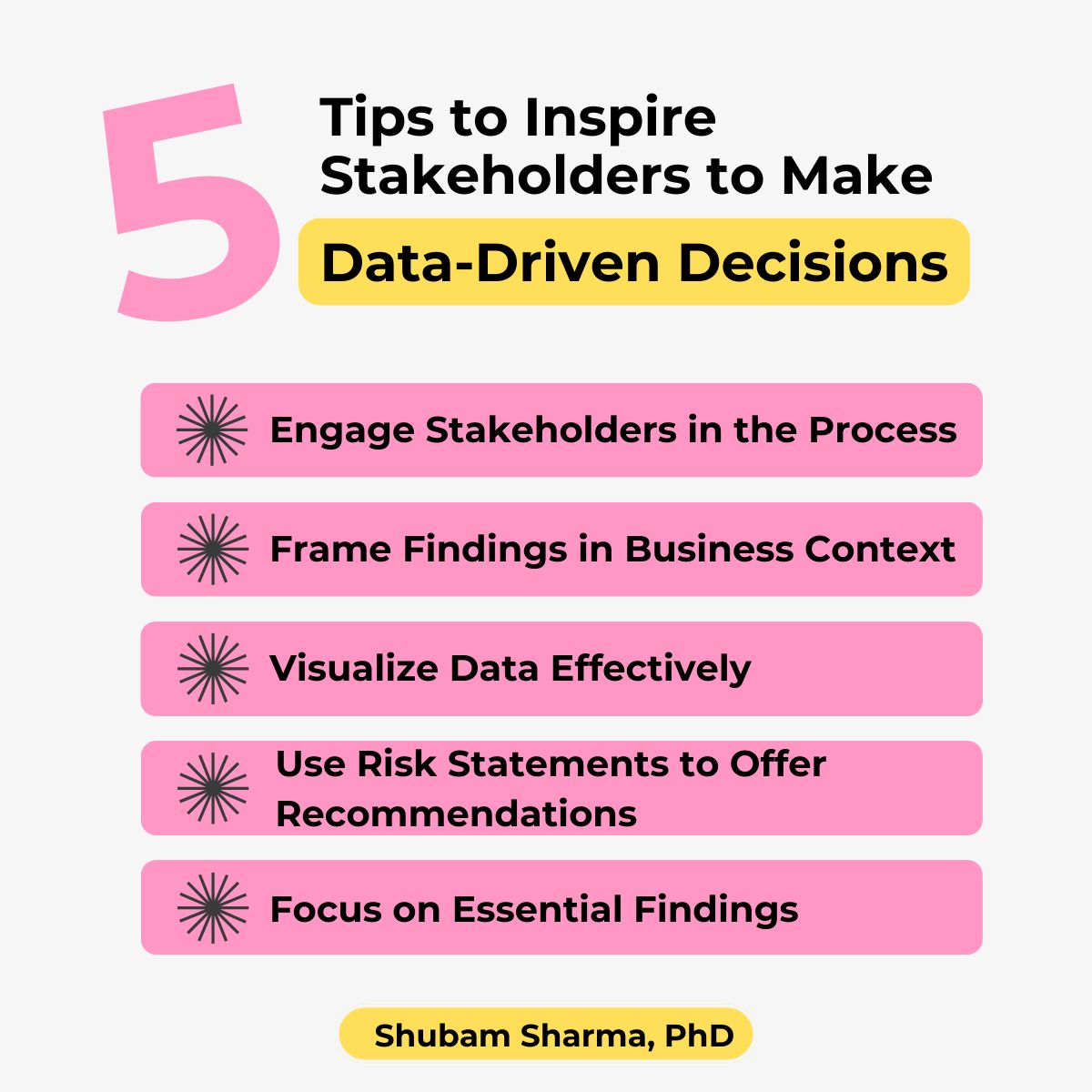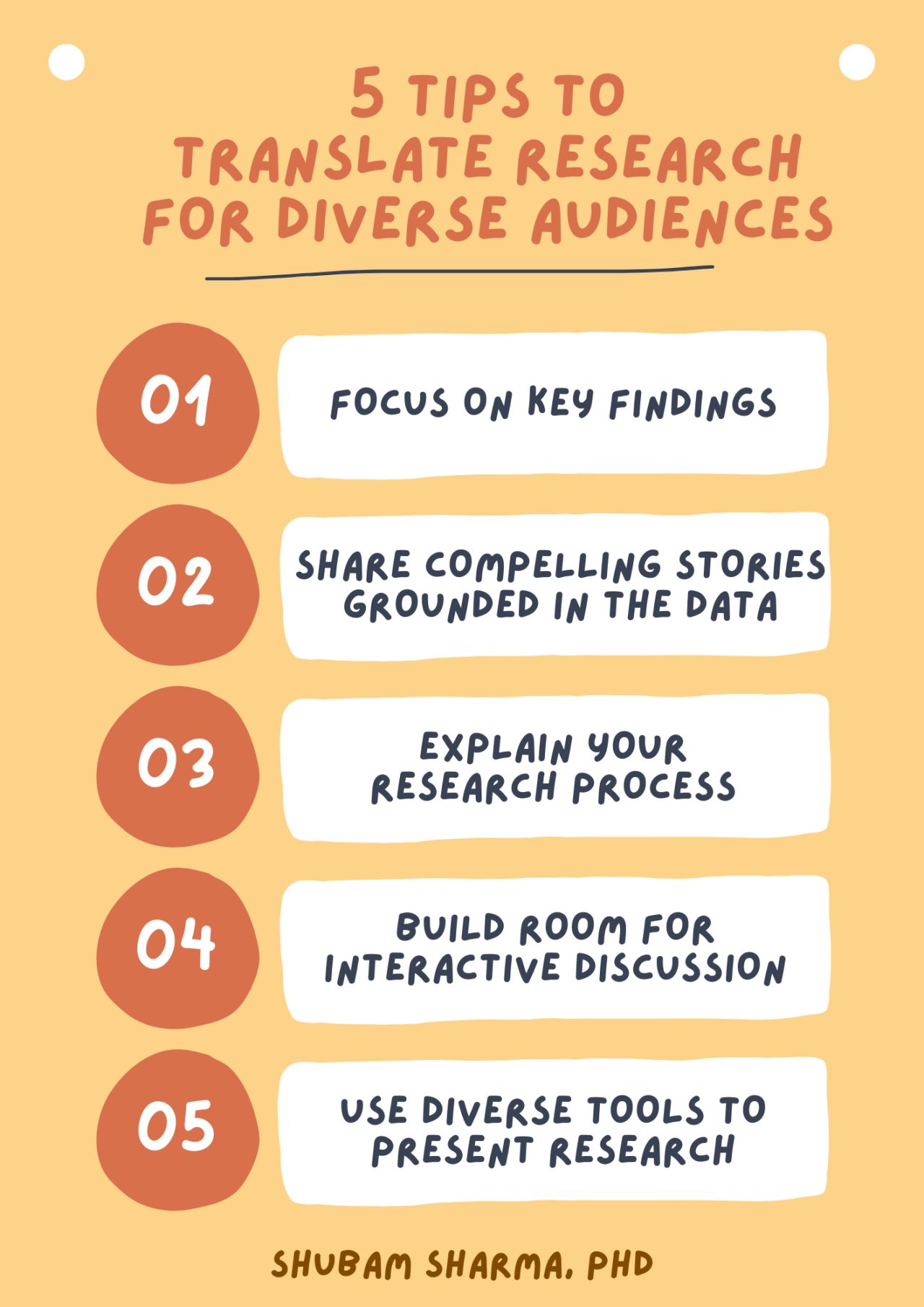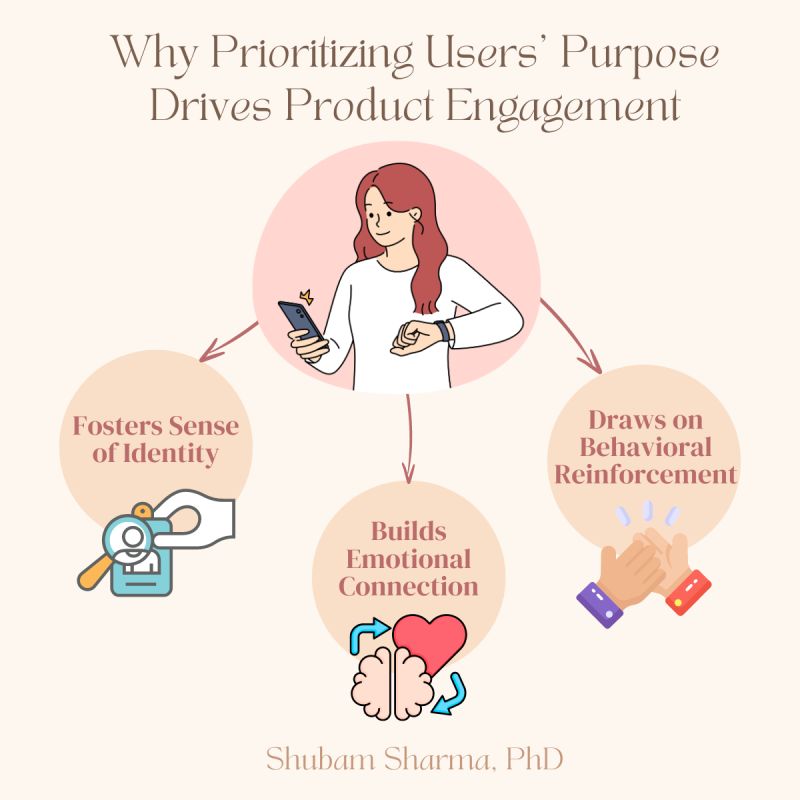Articles 📰
Here you'll find selected posts I've written on LinkedIn. ✍
I love creating informative visuals to go along with my posts, so you'll find those here as well.
I've linked each post, in case you'd like to comment and share your thoughts. I welcome your insights!
𝐅𝐚𝐦𝐢𝐥𝐢𝐚𝐫𝐢𝐭𝐲 𝐟𝐨𝐬𝐭𝐞𝐫𝐬 𝐜𝐨𝐦𝐟𝐨𝐫𝐭 𝐛𝐮𝐭 𝐬𝐨𝐦𝐞𝐭𝐢𝐦𝐞𝐬 𝐬𝐭𝐢𝐟𝐥𝐞𝐬 𝐠𝐫𝐨𝐰𝐭𝐡. - 5/6/2024
According to the psychological principle of the ❇mere exposure effect❇, we have a tendency to prefer certain things, people, and information simply because we are familiar with them.
In other words, if we've been exposed to something before, we're more likely to have a preference for it in the future.
But is this tendency to stick to what's known and what's comfortable always a good thing? 🤔
Consider this scenario: ⬇
📈 You're responsible for data analysis as a researcher.
📝 You usually rely on the same analytic methods when working with data.
💡 One day, your teammate suggests a new analytic method.
🤨 You hesitate - you've always used a certain analytic approach and it's worked for you. Why change what's been effective?
Now, this is just one scenario, but there are many day-to-day examples of how the mere exposure effect influences our behaviors and sometimes even prevents us from trying new things.
Here are a few other aspects of our lives where this effect can show up:
🍽️ The foods we eat
✈️ The places we visit
📚 The books we read
👫 The people we befriend
🛍️ The products we select and use
By sticking to what's known, we may miss out on innovative ideas, opportunities for learning and growth, and novel experiences. Perhaps that new data analytic method could have brought newfound efficiency in data analysis and fresh insights.
So, although familiarity provides comfort and even a sense of security, it's important for us to recognize when it may be holding us back.
By embracing the unknown, whether it's trying a new analytic method or getting to know someone with a background different than our own, we can open ourselves up to a world of new possibilities. 🌱
Until then, I'll keep sharing more tidbits of psychology insights. After all, familiarity may just bring you back for more. 😉
❓How have you noticed the mere exposure effect shaping your day-to-day decisions and preferences? I'd love to hear about your experiences! 😊
Tips to Inspire Stakeholders to Make Data-Driven Decisions - 4/8/2024

In the realm of research, what comes after is just as important as the research process itself.
And what comes after involves using research findings to make strategic decisions and drive real-world impact.🌍
Often times, researchers are not the ones who make these decisions: they're in the hands of executives and stakeholders.
As researchers, it's our responsibility to ensure that these decision-makers are equipped with the insights they need to make informed, data-driven decisions. 📈🤝
📝So here are 5 practical and easy-to-implement tips to do just that.
1️⃣ Engage Stakeholders in the Process:
🔹Seeking stakeholder feedback and input throughout the research process can ensure alignment and ownership of decisions.
🔹One way to engage stakeholders from the start of a project is to complete stakeholder interviews to identify their needs and concerns regarding the project. This is also an opportunity to gauge the extent to which they'd like to be involved.
2️⃣ Frame Findings in Business Context:
🔹Clearly articulate how research findings align with organizational goals and guide solutions for pressing business challenges.
🔹To do this, you can quantify the potential return on investment and value proposition of proposed initiatives or decisions, including estimates of cost savings, revenue growth, or other tangible and relevant benefits.
3️⃣ Visualize Data Effectively:
🔹Use data visualization techniques such as charts, graphs, and dashboards to present complex information in a clear, concise, and visually appealing manner.
🔹In addition to visualizations of quantitative data, using video or audio recordings from participant/user interviews can also support effective communication of research findings.
4️⃣ Offer Actionable Recommendations Using Risk Statements
🔹Outline specific steps and strategies that can be implemented to address the identified opportunities and challenges.
🔹To do this, consider framing your recommendations in easy-to-understand risk statements. Share the degree to which performing or not performing a certain decision is high/medium/or low risk and share supporting metrics and insights as to why that's the case.
5️⃣ Present the most essential information that can drive action.
🔹Most senior leadership or stakeholders will not have the time to sift through a long report of your research findings. Instead, stick to the most essential information that will directly influence action.
🔹You can still have the full set of findings in case there are follow-up questions, but prioritize clarity and brevity.
As researchers, we know that the research journey doesn't end with data collection and data analysis.
Rather, it signals the next phase of a project - ✨to empower decision-makers to make well-informed, data-driven decisions that drive positive change.✨
❓What other strategies have you used to inspire data-driven decision-making for key stakeholders in your projects?
How Companies Draw on Behavioral Science to Drive Engagement - 4/4/2024
When companies use algorithms that feed us information that fits with our likes and beliefs, they are capitalizing on a key human tendency.
There's a simple behavioral science principle that explains this.
⤵
💡When something aligns with what we already believe in and value, we are more likely to give our time and attention towards that.💡
💵🤝And, once we give our attention to something, we're more likely to engage with and invest in it (be it financially or emotionally).
This tendency to search for, believe, and remember information that confirms our preexisting beliefs is known as 🎯confirmation bias.🎯 As a result of it, we may even ignore contradictory evidence.
Confirmation bias is prominent in our everyday technology usage and influences our decision-making processes and how we think about people and events.
Sometimes, we may not even realize how it affects us. 🤨
🧐Here are a few examples how:
🌐Social Media Platforms
🔹We're more likely to follow accounts and engage with content that shares similar opinions to our own. We may even unfollow those with differing viewpoints, which curates the feed to reinforce our views.
🛍Product Reviews
🔹If we're in the market to buy a new gadget and already have a preference for a brand, we're more likely to trust positive reviews for that brand while downplaying negative reviews. We may unknowingly overlook potentially better options as a result.
💬Lifestyle Advice
🔹If we're seeking tips to follow a specific diet or workout routine, we're more likely to accept content that validates our chosen method and even overlook its potential drawbacks.
📦Personalized Recommendations
🔹We're more likely to buy a product that's similar to something we've already shown interest in and perceive similar personalized product recommendations as relevant and appealing.
Platforms' algorithms will align with our preferences and likes according to how we interact on them. And more often that not, we engage in a way that adds to what we already know and believe in.🙈
The challenge is that once we have strong-held beliefs about something, it can be difficult to consider alternative perspectives.
As consumers, there's 1️⃣ practical step we all can take to curb this tendency: ✴Diversify your sources of information.✴
➡ This can include exploring alternative brands, consulting multiple sources for news and content, or engaging in conversations with people with viewpoints different than our own.
Sure, these different perspectives/products/sources may not capture our attention immediately. However, the more we practice this way of thinking, the more we'll learn how to give our attention to them. ✅
And sometimes, our attention SHOULD go towards "feeding the algorithm" with things that *don't* just confirm our beliefs.
✨Because learning and growth don't always come from confirmation.✨
❓What strategies do you employ to diversify your sources of information in your life?
Tips to Translate Research for Diverse Audiences - 4/3/2024

We all recognize the importance of translating research for technical and non-technical audiences alike.
But sometimes effectively doing so can be more challenging than it seems.
In my own work, I've found the following solutions to be helpful in research translation.
✅ These easy-to-implement solutions are likely to make sure that your audience not only understands the information but is also inspired to act upon it.
➡ 1) Prioritize key findings.
🔹Focus on the most relevant and impactful findings instead of overwhelming your audience with every detail from your research.
🔹How likely is it that a stakeholder, client, or partner will remember EVERY single detail? And honestly, it's not fair to expect that of them either.
🔹Instead, align the findings with the overall objectives of the team or organization and highlight insights that directly contribute to those goals.
➡ 2) Craft compelling narratives.
🔹Ground your data in relatable stories to make it more engaging and memorable.
🔹Stories have a unique ability to humanize research findings and can resonate with audiences on an emotional level. This can help to drive home the significance of the data in a way that numbers alone may not.
➡ 3) Be transparent about your research process.
🔹Providing insights into how your research was conducted can enhance the credibility and trustworthiness of your findings.
🔹Further, by breaking down complex methodologies into easily digestible explanations, you can help the audience grasp the steps involved and appreciate the rigor behind the findings.
🔹And because they'll better understand the behind-the-scenes aspects of the study, this will inspire curiosity and participation from your audience.
➡ 4) Create space for interactive discussion:
🔹Interactive sessions can lead to better comprehension and retention of the research information and encourage deeper audience engagement.
🔹Allowing time for questions, comments, and discussions also allows you to address specific concerns and clarify any misunderstandings.
➡ 5) Consider using diverse methods of presentation.
🔹Distilling complex research findings into visually appealing and easy-to-understand graphics can improve understanding of the research.
🔹In addition to standard presentations and reports, you might try a visual storyboard, infographic, word cloud, flowchart, or concept map to provide research insights in unique ways.
🔹It's important to know whether your audience would be receptive to these methods and what their expectations are. Tailor accordingly!
💡As researchers, we have a responsibility to not only conduct quality research, but also put in the effort to make sure that others understand it. Our commitment to clarity and accessibility ensures that our research can inform decision-making and support positive changes.💡
❓Have you used any of these strategies in your own research translation? Do you have any other suggestions?
Prioritizing Users' Purpose to Drive Product Engagement - 3/27/2024

Little did I know I'd make a connection between behavioral science and product engagement from a new app I installed.
For about a month now, I’ve been using this habit tracker app (quite a feat considering my track record with such apps). From a behavioral science perspective, I thought: what about this app has kept me engaged with it?🧐
I realized that the answer is rooted in my own psychology research: this app supports my sense of purpose.🎯
In my research, I’ve explored how people develop and use their sense of purpose over their lives. Feeling a strong sense of purpose makes us more likely to stay committed to our goals and experience greater life satisfaction.
So, when a product ⬇
▪ dovetails with us carrying out our purpose,
▪ facilitates goal achievement aligned with our purpose, or
▪ elicits a psychological response that supports our purpose,
✔ we should be more likely to engage with and derive satisfaction from it.
It’s a behavioral science strategy that can help both companies in designing purpose-driven products and users in having meaningful experiences with products. 💯
🤔 But why does prioritizing purpose to increase product engagement work?
Consider it from a behavioral science perspective:
💡Sense of Identity
▪ When products reflect users’ values or support their goals (and overarching purpose), this increases engagement as those products are incorporated into their identity. Users then seek validation and affirmation of who they are through their product interactions.
➡ Example: If being an adventure seeker is part of your identity, using Patagonia products might feed your identity and align with your purpose to explore the world.
💡Emotional Connection
▪ Users are likely to form an emotional connection with products that align with their purpose. Such products elicit feelings of joy, fulfillment, or empowerment and make them more likely to integrate the product into their daily lives.
➡ You may feel pride using your water tracking app when you fulfill your goal of drinking enough water. This facilitates an emotional bond between you and the product which aligns with your purpose to live a healthy life.
💡Behavioral Reinforcement:
▪ Users are more likely to continue to use a product that supports their purpose by rewarding them through positive feedback loops.
➡ Lush incentivizes customers with a discount when they bring back empty product containers. Lush recycles these containers, which can support a user’s purpose of being environmentally-conscious and increase their Lush product usage.
✨In sum, understanding the purpose-product connection can enable product teams to create product experiences that resonate with users and drive user engagement.✨
Looks like I might have to add “brainstorm connections between behavioral science and product development” to my habits to track in the app.
❓ Are there any products you use that support your sense of purpose?